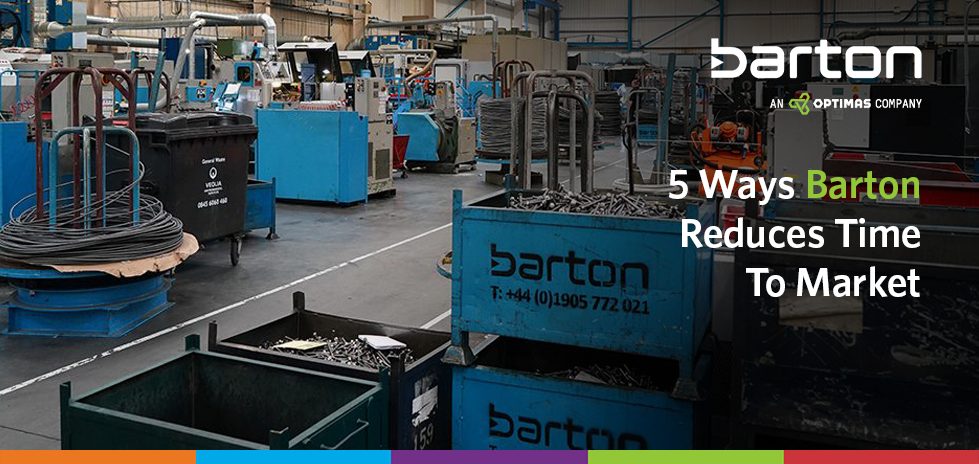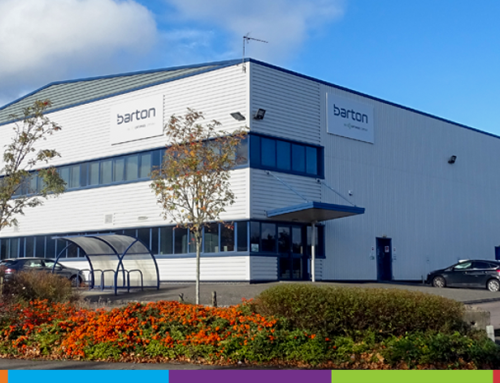
5 Ways Barton Reduces Time to Market
Many manufacturers are still reporting 30-week lead times, regardless of improvements over the last year. Local sourcing and simplifying production processes remain key priorities for many.
Fasteners may be some of the smallest parts in a production build, but they’re often the most critical. Depending on their application, some fasteners have to be intricately engineered and rigorously tested before they’re put to use, taking up a considerable amount of time and resources. This is especially the case for manufacturers that are sourcing, finishing and testing fasteners in multiple locations.
Barton Cold-Form, Optimas’ UK manufacturing division, provides their UK and European partners with localised, in-house fastener design, engineering and production facilities. By keeping these processes all under one roof, our partners significantly reduce their lead times and avoid costly shipping and logistics charges, so they can focus on manufacturing cutting-edge products.
Specialising in cold-forming, a highly reproducible manufacturing process, Barton’s manufacturing team are experts in all stages of the production process, from product design to point of manufacture. Here are five ways Barton Cold Form reduces manufacturers’ time to market:
Design
- With some members holding over 30 years’ experience in fastener engineering, the team at Barton are well-versed in dealing with all types of fastening requirements. Collaborating with customers on their drawings and CAD files, our engineers work to understand and perfect fastener designs to make sure the end product is fit for use.
Prototyping
- Using state-of-the-art 3D printers and CNC machinery, Barton’s team are equipped with a wealth of prototyping equipment to test the material, strength and performance of a fastener outside of its application. Alongside producing precise and geometrically complex parts, our 3D printers allow us to achieve rapid, same-day prototyping for our partners, boosting their time to market.
Engineering
- In the earliest stages of a production build, Optimas’ in-house engineers can assess and refine your Bill of Materials. From reviewing the suitability of fastener finishes and materials to reducing part proliferation, the team at Barton find ways to improve product performance, drive cost savings and mitigate risk.
Quality Testing
- Working to a range of customer, industry and regulatory-specific requirements, like PPAP Level 3 and Failure Mode and Effects Analysis, Barton’s quality team conduct a range of rigorous quality tests to make sure our fasteners are exactly fit for use. Some of our testing capabilities include salt spray testing, torque tension testing and metallography testing in our state-of-the-art quality labs.
Production
- Cold-heading is a process that produces especially durable parts, as it maximises the material’s metallurgical properties and structural integrity. Barton has 29 Nedschroef, Sacma and Nakashimada cold-heading machines, running 24 hours a day. These machines can produce a staggering 1 million pieces per day, made from a wide range of standard and exotic materials and in a wide range of diameters and lengths.
With over 90 years’ experience in fastener manufacturing, Barton is well-equipped to manage each critical stage of fastener production, all under one roof. By keeping each of these processes in-house, Optimas’ partners can significantly reduce their lead times and improve their time to market.
As companies put effort into taking more control of their operational and capital expenditure, Total Cost of Ownership has taken on a new meaning. Through consolidating all of these stages of production, Optimas and Barton are helping to address manufacturers’ Total Cost of Ownership and maximise efficiencies across their production processes.






